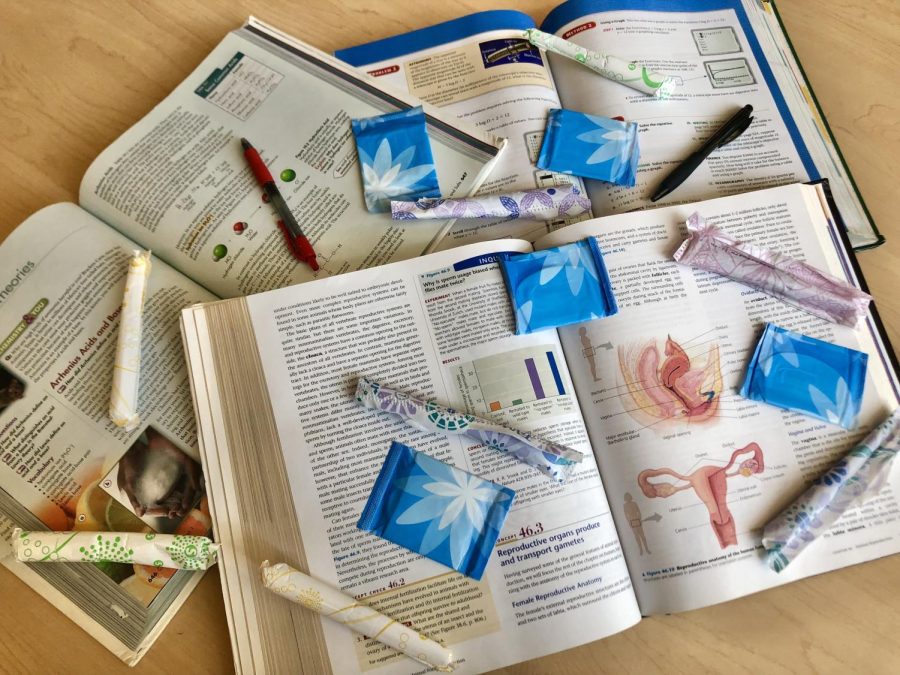Periodically disrupting learning
Women across the nation are balancing their their educational wellbeing and their physical one. This photo represents the struggles women face while attempting to find the balance.
Staring at the clock, unable to use the restroom, the young woman in class becomes increasingly worried and distracted. She ponders whether it is better to leave the class without permission or stay in a possibly embarrassing and uncomfortable situation.
This internal struggle because of her inability to leave and change her feminine hygiene product, has now caused her to no longer be able to focus on her classwork.
Additionally, this rule that has been put in place to keep students engaged in the classroom has stolen the ability for these young women to have a safe and productive learning experience.
Every month, she along with many other young women face the same slew of issues: discomfort, embarrassment, and shouldering the burden of self-advocating for something out of their control.
All of these factors are amplified by the school setting and the social dynamics of being a young woman in high school and attempting to adhere to the social norms of their school community.
Sameera Yatham, a senior at Wilsonville High School, explains the social and academic dynamic, stating “It is kinda a silent issue that occurs but yeah it’s something that occurs so frequently and to a lot of people, I know a lot of people are affected in their academics, and it takes a toll about how they go on their school day.”
Not only are young women affected physically, but mentally. For many young girls, their “silent” battles against their bodies’ natural process act as a roadblock as they attempt to continue learning as normal.
The National Center for Education Statistics estimates that there were roughly 15,435,529 9-12th grade students enrolled in US public high schools in 2021. With approximately half of the students enrolled being female, it’s important for schools to recognize the hardships young women must learn to cope with whilst maintaining the appearance that they are perfectly fine.
Senior at Wilsonville High School, Chloe Russell, expresses her frustrations with how school systems educate both young men and women about female health, stating “I feel like it’s not really talked about at school or anything in health classes, I guess it is in health classes, but it’s not even good.”
Not only do they feel that the health education system is failing to inform young women, but they also expressed their concerns that women are taught to keep quiet about their discomfort.
Clara Hiltebrand, senior, developed upon this stating, “They take the girls to a separate room… and the boys, they just learn all about their bodies and they don’t learn about girls bodies, and then they like shame women for something they can’t control.”
This teaching methodology encourages young women to stay silent about their struggles and perpetuates the taboos surrounding female health.
In order to correct these cycles of silence and shame, schools must change their teaching styles and educate all people about female health in a way that promotes conversation and empathy.
Equal education amongst all students within schools surrounding health, in general, would allow for people to better support and understand each other. Not only will this education help women to feel more supported by their classmates and teachers, but it will allow for a deeper sense of unity amongst school communities across the nation.
Women across the nation are struggling with this issue every day, and while this issue is more widely acknowledged by society, there remains a lingering sense of shame, isolation, and panic associated with a natural process.
Students are educated daily on subjects they might never use again, and yet schools refuse to talk about female menstruation because they feel it is not pertinent to enough students. This must change as women deserve to feel safe and respected within their learning environments.










